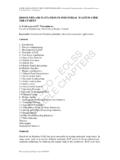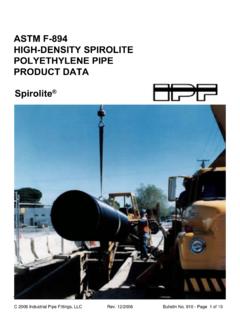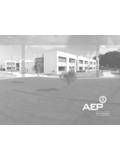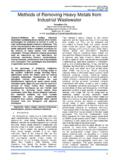Transcription of ENVIRONMENTAL QUALITY (SEWAGE AND …
1 ENVIRONMENTAL QUALITY ( sewage AND industrial EFTLUENTS) REGULATIONS, 1979 ENVIRONMENTAL QUALITY ( sewage AND industrial EFFLUENTS) REGULA'IIONS, 1979 ARRANGEMENT OF REGULATIONS PART I PRELIMINARY Regulation 1. Citation and Commencement. 2. Interpretation. 3. Application. PART I1 NEW SOURCES OF DISCHARGE 4. Prohibition against new and altered sources of effluent discharge. 5. Requirement and approval of plans. PART I11 ACCEPTABLE CONDITIONS OF DISCHARGE INTO INLAND WATERS 6. Prohibition of discharge of effluent containing certain substances. 7. Standard methods of analysis of effluents. 8. Parameter limits of effluent to be discharged into inland waters. PART lV DISCHARGE OF effluent AND SLUDGE ONTO LAND 9. Restrictions on the discharge of effluents.
2 10. Restrictions on disposal of dudges. PART V LICENCE FOR CONTRAVENTION OF ACCEPTABLE CONDITIONS 11. Acceptable conditions which may be contravened. 12. Reporting changes in information furnished for purposes of appli- cation. 13. Making changes that alter QUALITY of effluent . 14. Display of licence. 15. Continuance of existing conditions and restrictions in case of change in occupancy. PART V1 MISCELLANEOUS Regulation 16. Point of discharge. 17. Dilution of effluent . 18. Spill or accidental discharge. 19. Provisions for inspection. 20. Occupier to render assistance during inspections. PART V11 FEES 2 1. Fee for written permission. 22. Fee for licence including renewal of licence. 23. Waiver of fee. 24. Fee for transfer of licence.
3 FIRST SCHEDULE List of Discharges to Which These Regulations Do Not Apply. SECOND SCHEDULE Standard Methods of Analysis of effluent . THIRD SCHEDULE Parameter Limits of effluent of Standards A and B. FOURTH SCHEDULE List of Catchment Areas Where Standard A Applies. FIFTH SCHEDULE List of Parameters the Limits of Which to be Specified. SRf H SCHEDULE Parameter Limits of effluent Other Than of Standard A or B. SEVENTH SCHEDULE Method of Computing effluent -Related Licence Fee. ENVIRONMENTAL QUALITY ( sewage AND industrial EFFLUENTS) REGULATIONS, 1979* In exercise of the powers conferred by section 51 of the ENVIRONMENTAL QUALITY Act, 1974, the Minister, after consukation with the ENVIRONMENTAL QUALITY Council, makes the following regulations: PART l PRELIMINARY 1.
4 Citation aod Commencement. (1) These Regulations may be cited as the ENVIRONMENTAL QUALITY ( sewage and industrial Effluents) Regulations, 1979. (2) These Regulations shall be deemed to have come into force on the 1st January 1979; except for those sources in existence before this date, these Regulations shall come into force on January 1, 198 1. 2. Interpretation. In these Regulations, unless the context otherwise requires- " effluent " means sewage or industrial effluent ; " industrial effluent " means liquid water or wastewater produced by reason of the production processes taking place at any industrial premises; "inland waters" include any reservoir, pond, lake, river, stream, canal, drain, spring or well, any part of the sea abutting on the foreshore, and any other body of natural or artificial surface or subsurface water; "Licence" means a licence which a obtain for the purposes of section 25 of the Act; "licensed premises" means premises occupied by a person who is the holder of a licence issued in respect of the premises.
5 "parameter" means any of the factors shown in the first column of the Third Schedule or in the Fifth Schedule and any other factors which the Director-General may specify in accordance with the provisions of paragraph (4) of regulation 8; " sewage " means any liquid waste or wastewater discharge containing animal or vegetable matter in suspension or solution, and may include liquids containing chemicals in solution; Published as P. U. (A) 1211 979. Came into force on 99 "sewer" means any line of pipes or channels with their appurtenances designed and used to convey effluent ; "sewerage" system" means a system incorporating sewers and all other structures, devices, equipment, and appurtenances intended for the collection, transportation, and pumping of effluent including a treatment pht; "treatment plant" means any facility for the conditioning of eMumt to effect reduction or partial reduction of its potential to cause pollution.
6 These Regulations shall apply to discharges of emuent into any inland waters, other than the effluents discharged from prescribed premises or other premises specified in the Fist Schedule or both. PART I1 NEW SOURCES OF DISCHARGE 4. Rohibitim against new md altered sources of effluent didurge. NotwitManding any other provisions of these Regulations,no person with- out prior written permission of the Director-Gmed shall- (1) carry out any work on any premiss that may result in anew source of effluent discharge or cause a material change in the quantity or QUALITY of the discharge from an existing source; or (2) construct on any land any building designed or used for a purpose that may cause the land or building to result in a new source of effluent discharge.
7 (1) An application to cany out any work, building, erection or alteration specified in regulation 4 shall be submitted to the Director-General in the prescribed form and shall be accompanied by the prescribed fee under regu- frsion 21. (2) ll~e Director-General may grant such application either subject to conditions or unconditionally and may require the applicant-. (a) to repair, alter, replace or install control equipment; (b) to conduct a monitoring programme at his own expense or bear the cost of such programme within such period or at such time and in such manner as the Director-General may specify. PART 111 ACCEPTABLE CONDITIONS OF DISCHARGE INTO INLAND WATERS 6. Prohibition of discharge of effluent containing certain substances.
8 No penon shall discharge or cause or permit the discharge of any of the following substances into any inland waters; (1) any inflammable solvent; (2) any tar or other liquids immiscible with water; (3) refuse, garbage, sawdust, timber, human or animal waste or solid matters. 7. Standard methods of analysis of effluents. For the purposes of these Regulations, the effluent discharged into any inland waters shall be analysed in accordance with the latest edition of the methods specified in the Second Schedule, as amended from time to time, or in accordance with such other methods of analysis as the Director-General . thinks fit. 8. Parameter limits of effluent to be discharged into inland waters. (1) No person shall discharge effluent , analysed in accordance with regu- lation 7, which contains substances in concentrations greater than those speci- fied as parameter limits of- (a) Standard A, as shown in the third column of the Third Schedule, into any inhnd waters within the catchment areas specified in the Fourth Schedule; or (b) Standard B, as shown in the fourth column of the Third Schedule, into any other inland waters.
9 (2) Where two or more of the metals specified as parameters (xii) to (xvi), pursuant to paragraph (1) of this regulation, are present in the emuent, the concentration of these metals shall not be greater than- (a) milligrammes per litre in total, where Standard A is applicable; (b) milligrarnmes per litre in total, and I .O milligramme per litre in total for soluble forms, where Standard B is applicable. (3) Where Standard B is applicable and when both phenol and free chlorine are present in the same effluent , the concentration of phenol individually, shall not be greater than milligrammes per litre and the concentration of free chlorine individually, shall not be greater than 1 milligramme per litre. (4) Where the Director-General deems it necessary, he may by notice in writing specify the acceptable conditions of discharge including the parameter limits of effluent , with respect to any or all of the parameters specified in the Fifth Schedule and any other parameters not listed anywhere in these Regu- lations.
10 PART IV DISCHARGE OF effluent AND SLUDGE ONTO LAND 9. Restrictions on the discharge of effluents. No person shall discharge or cause or permit the discharge of any effluent in or on any soil or surface of any land without the prior written permission of the Director-General. 10. Restrictions on disposal of sludgcs. No person shall discharge or cause or permit the discharge of any solid waste or sludge that is generated from any production or manufacturing pro- cesses or from any effluent treatment plant in or on any soil or surface of any land without the prior written permission of the Director-General. PART V LICENCE FOR CONTRAVENTION OF ACCEPTABLE CONDITIONS 1 1. Acceptable conditions which may be contravened.






